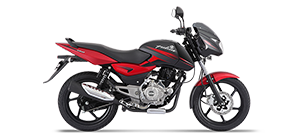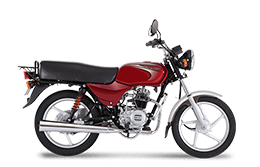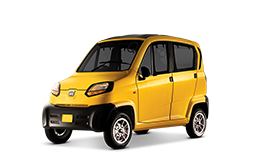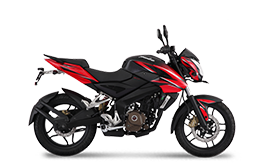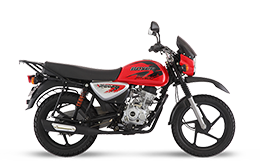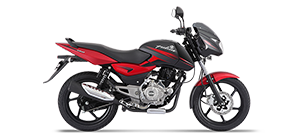Autocar India
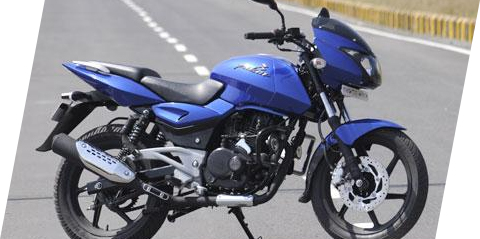 Design & Engineering: The Pulsars were one of India’s best-looking bike family. However, with the third iteration looks seem a bit jaded. The refreshed 180 is still a handsome motorcycle and has improved things by a notch as it borrows some cues from the Pulsar 200 and is now shod with reassuringly fatter front forks from that sibling. What remains unchanged is a black dress-code for this bike’s lower cycle parts, as are sleek alloy rims.
Design & Engineering: The Pulsars were one of India’s best-looking bike family. However, with the third iteration looks seem a bit jaded. The refreshed 180 is still a handsome motorcycle and has improved things by a notch as it borrows some cues from the Pulsar 200 and is now shod with reassuringly fatter front forks from that sibling. What remains unchanged is a black dress-code for this bike’s lower cycle parts, as are sleek alloy rims.The new 180 comes with trendy Pulsar trademark digital instruments with a bold analog and white-set tachometer that is easy to decipher, and a similar large digital — and contact-free driven — speedometer in a commanding position on the fascia. The instrument console includes an engine redline beacon as also twin-trip gauges that can be independently zeroed via a button.
A fuel gauge along with regular warning icons is standard fare. New on this bike are sporty clip-on handlebars, atop which are mounted a superb set of switches true to the Pulsar family. These contact-free operation switches have self-canceling indicators that ensure you won’t forget to leave them on after completing a turn. The 180 DTS-i still comes with smart, broad and functional rearview mirrors but they use ill-fitting rubber boots.
The latest Bajaj gets new mini-tank extensions first seen on the Pulsar 200, as well as really smart, upmarket-looking raised letter decals. Also new is a tank pad that protects the rear of the fuel tank from getting scratched by a rider’s belt buckle. The 180 retains its flush-fitting alloy and aircraft-style fuel-filler. While the bike could offer more functional knee recesses, we found its split seat and grab-bar to be welcome new additions. Also used is a sporty-looking exposed and O’ring sealed drive chain.
Flush-fitted LED tail and brake light strips on the sharp rear section make this one of the best-looking tails on Indian roads. The new 180 also uses an extended rear mudguard that provides good illumination for its numberplate. Nice paint quality, good fit and finish, as well as a high level of attention to detail are obvious 180 DTS-i highlights.
Interiors:
The 180 DTS-i sticks with an all-alloy cased, four-stroke cycle engine that’s clearly based on the earlier tried-and-tested powerplant. Its single-cylinder is air-cooled and still displaces 178.6cc. Bajaj has used its patented DTS-i technology, which ensures the engine’s twin-plugs are set to ignite together in one instant, thereby delivering higher power output as well as improved fuel economy. The bike also employs ExhausTEC, or a resonance chamber sitting on the silencer that helps pack a healthy punch low in the bike’s power band.
There’s a marginal bump up in power as the bike now delivers 17.02bhp at 8500rpm and 1.45kgm of torque at 6500rpm. While straightline performance is just about identical to the outgoing model on paper despite the new 180 weighing in a few kilos more than its predecessor, the rider benefits from a relatively more refined feel now.
Throttle action is nice and light, with a quick response always at hand, and the bike revs cleanly all the way into its redline without any glitch. It’s a flexible engine too, with five, well-spaced gear ratios that ensure a rider need not play too much with the ’box to extract optimal performance. The cable-operated clutch on our test bike worked well at all times
We managed to hustle the new 180 from rest to 60kph in 4.83 seconds, going on to pass 100kph in 14.18sec en route to a creditable true top whack of 120kph. We discovered that speedometer error, which was pleasantly absent on the earlier 180, now plays a part on the new Pulsar.
Performance & Economy:
A larger footprint, four extra kilos and improved performance should have adversely affected economy. But our test proves the price paid has been minimal as DTS-i tech and an overall efficient engine keep the 180 almost as economical as before. Remember, this Indian sportsbike achieved cult status by virtue of not compromising economy despite it being a performance machine. The 180 is good for 43.3kpl in city conditions, and 46kpl on the highway.
Ride & Handling:
The Pulsar 180 DTS-i rides on 17-inch rims front and rear, using a twin downtube frame, with its rear swingarm now fabricated from elliptical section metal instead of the rectangular steel used before. The front forks now measure a much healthier 37mm and the bike has also been shod with superior tubeless tyres at both ends, the rear a chunky 120/80 x 17-incher. And, at the rear, the Pulsar 180 still uses twin, gas-charged suspension.
The clip-on handlebars deliver superior feel and the riding position remains unchanged, calling for a modest lean into the handlebars, with slightly rear-set foot-pegs. The 180’s seat is adequately padded.
Handling feels a notch more stable in the straight line, thanks to the uprated suspension and tyres, with turn-in also a little heavier as a direct consequence. There’s a marked improvement in ride quality as the bike soaks up the worst of Indian roads with aplomb. While the new 180 calls upon some extra effort around corners, it stays that much more planted on the road while called upon to execute turns.
The front disc brake has now been upsized with a 260mm diameter rotor, giving the bike really fierce brake bite and capable of bringing this 147kg motorcycle to a stop from 60kph in no more than 15.6 metres
Verdict:
The new Pulsar 180 DTS-i is an improvement on an already decent bike. Borrowing a raft of features from its 200cc sibling, the 180 now gets fresh appeal. The slender boost in power counters its weight gain and keeps performance at par with the outgoing model, which anyway wasn’t a slouch. Bajaj has surprisingly neglected to equip its new bike with fuel-injection. Still, ride and handling on the new 180 are better than before. Overall, better features and more pizzazz for almost the same price make the new Pulsar 180 DTS-i an interesting alternative to smaller 150cc bikes..
The following review has been sourced from Autocar India - Sept 2009.

